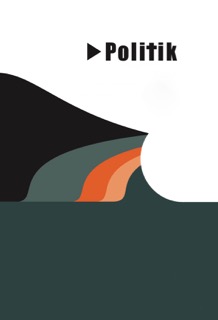Introduktion: Løgn og sandhed – fakta og fiktion
DOI:
https://doi.org/10.7146/politik.v21i1.106147Resumé
IndledningReferencer
Arendt, H. (2005), 'Truth and Politics,' In D. Wood & J. Medina, (red). Truth, engagements across philosophical traditions, Malden, MA: Blackwell Pub., s. 295-314.
Bode, L., Vraga, E.K. (2017). See something, say something: Correction of global health misinformation on social media. Health Communication, s. 1–10.
Carey, Benedict (2017). How Fiction Becomes Fact on Social Media. The New York Times. Tilgængelig på: https://www.nytimes.com/2017/10/20/health/social-media-fake-news.html
Cook, J., Ecker, U. & Lewandowsky, S. (2015). Misinformation and how to correct it. Emerging trends in the social and behavioral sciences: An interdisciplinary, searchable, and linkable resource.
Davies, W. (2016). The age of post-truth politics. The New York Times, 24, 2016.
European Commission (2018). Experts appointed to the High-Level Group on Fake News and online disinformation, European Commission. Tilgængelig på: https://ec.europa.eu/digital-single-market/en/news/experts-appointed-high-level-group-fake-news-and-online-disinformation [Tilgået den 2.20.18].
Frankfurt, H., (1986). On bullshit. Raritan Quarterly Review, 6(2), pp.81-100.
Harsin, J. (2015). Regimes of Posttruth, Postpolitics, and Attention Economies. Communication, Culture & Critique, årg. 8(2), s. 327-333.
Hern, A. (2017). Facebook and Twitter threatened with sanctions in UK “fake news” inquiry. The Guardian. Tilgængelig på: http://www.theguardian.com/media/2017/dec/28/facebook-and-twitter-threatened-with-sanctions-in-uk-fake-news-inquiry
Hopkin, J. & Rosamond, B. (2017). 'Post-truth Politics, Bullshit and Bad Ideas: Deficit Fetishism in the UK', New Political Economy, forthcoming, s. 1-15.
HRW (2018). Germany: Flawed Social Media Law. Human Rights Watch. Tilgængelig på: https://www.hrw.org/news/2018/02/14/germany-flawed-social-media-law
Jowett, G. (1987). Propaganda and Communication; The Re-emergence of a Research Tradition. Journal of Communication, årg. 37(1), s. 97-114.
Jowett, G., O’donnell, V., (2014). Propaganda & persuasion. Sage.
Congress (2016). Countering Foreign Propaganda and Disinformation Act of 2016. congres.gov. Tilgængelig på: https://www.congress.gov/bill/114th-congress/house-bill/5181/all-info
Kjær, J.S. (2017). Efter falsk nyhed om dyresex i København: Nye digitale diplomater skal bekæmpe fake news og russisk misinformation. Politiken. Tilgængelig på: https://politiken.dk/indland/art6102867/Nye-digitale-diplomater-skal-bek%C3%A6mpe-fake-news-og-russisk-misinformation.
Lasswell, H. (1938). Propaganda technique in the World War (Reprinted ed.). London: Kegan Paul, Trench, Trubner.
Levitin, D.J. (2017). Weaponized lies: how to think critically in the post-truth era. New York: Penguin.
Lewandowsky, S., Ecker, U., Seifert, C., Schwarz, N., & Cook, J. (2012). Misinformation and Its Correction. Psychological Science in the Public Interest, årg. 13(3), s. 106-131.
Liao, S. (2017). Facebook now blocks ads from pages that spread fake news. The Verge. Tilgængelig på: https://www.theverge.com/2017/8/28/16215780/facebook-false-viral-hoaxes-trump-malicious-suspicious
Lyons, T. (2017). News Feed FYI: Replacing Disputed Flags with Related Articles. Facebook Newsroom.
Patrick, B., & Thrall, T. (2007). Beyond Hegemony: Classical Propaganda Theory and Presidential Communication Strategy After the Invasion of Iraq. Mass Communication and Society, 10(1), s. 95-118.
Seifert, C. M. (2002). The continued influence of misinformation in memory: What makes a correction effective?. Psychology of learning and motivation, årg. 41, s. 265-292. Academic Press.
Shao, C., Ciampaglia, G. L., Flammini, A., & Menczer, F. (2016, April). Hoaxy: A plat-form for tracking online misinformation. Proceedings of the 25th international conference companion on world wide web, s. 745-750. International World Wide Web Conferences Steering Committee.
Sproule, J. M. (1987). Propaganda studies in American social science: The rise and fall of the critical paradigm. Quarterly Journal of Speech, årg. 73(1), s. 60-78.
Starbird, K., Maddock, J., Orand, M., Achterman, P., & Mason, R. M. (2014). Rumors, false flags, and digital vigilantes: Misinformation on twitter after the 2013 boston marathon bombing. iConference 2014 Proceedings.
Taylor, P. M. (2013). Munitions of the mind: A history of propaganda. Oxford Universi-ty Press.
Mosseri, A. (2017). Working to stop misinformation and false news. Newsroom. fb. com. Tilgængelig på: https://newsroom.fb.com/news/2017/04/working-to-stop-misinformation-and-false-news/
Vosoughi, S., Roy, D., & Aral, S. (2018). The spread of true and false news online. Science, årg. 359(6380), s. 1146-1151.
World Economic Forum (2016). Geneva: World Economic Forum.
Yglesias, M. (2017). The bullshitter-in-chief. Vox. Tilgængelig på: https://www.vox.com/policy-and-politics/2017/5/30/15631710/trump-bullshit
Downloads
Publiceret
Citation/Eksport
Nummer
Sektion
Licens
Forfattere, der publicerer deres værker via dette tidsskrift, accepterer følgende vilkår:
- Forfattere bevarer deres ophavsret og giver tidsskriftet ret til første publicering, samtidigt med at værket er omfattet af en Creative Commons Attribution-licens, der giver andre ret til at dele værket med en anerkendelse af værkets forfatter og første publicering i nærværende tidsskrift.
- Forfattere kan indgå flere separate kontraktlige aftaler om ikke-eksklusiv distribution af tidsskriftets publicerede version af værket (f.eks. sende det til et institutionslager eller udgive det i en bog), med en anerkendelse af værkets første publicering i nærværende tidsskrift.
- Forfattere har ret til og opfordres til at publicere deres værker online (f.eks. i institutionslagre eller på deres websted) forud for og under manuskriptprocessen, da dette kan føre til produktive udvekslinger, samt tidligere og større citater fra publicerede værker (se The Effect of Open Access).

